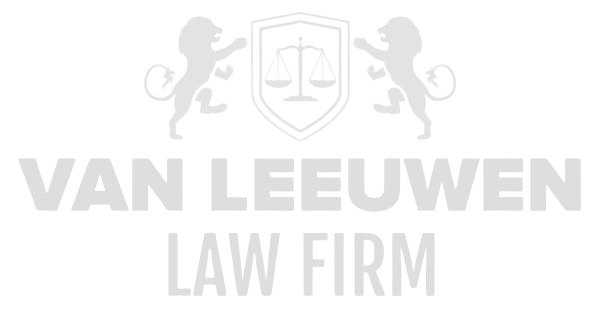The role of the Data Controller (DC) is central under the GDPR, as this entity is the primary decision-maker regarding the purposes, means, and frameworks of all personal data processing activities. This not only involves formulating policy guidelines but also translating them into concrete implementations in IT systems, processes, and contractual agreements with processors and subcontractors. Governance structures must be designed in such a way that every new processing activity is reviewed for compliance with GDPR principles, and that executive boards have access to real-time dashboards reporting on data flows, DPIA statuses, and data breach incidents. Executive attention to privacy is therefore indispensable: inadequate oversight not only leads to heavy fines but may also jeopardize the continuity of critical services when regulators intervene.
At the same time, the GDPR requires the DC to maintain bandwidth for both strategy and operations. Legal teams must be able to translate new legislative changes—such as the upcoming AI Regulation or modifications in international data transfer decisions—into updated policies and contract clauses within weeks. Operationally, consent management, data lifecycle handling, and incident response must react immediately to requests from data subjects and regulators. In cases involving allegations of financial misconduct or sanctions violations, a fragmented GDPR setup is no longer sufficient; constant readiness by directors and full accountability across the entire data chain become critical.
(a) Determining Purposes and Means
The Data Controller determines why personal data is collected, which data categories are essential, and through which means the processing will occur. This requires meticulous data mapping—from front-end forms to back-end storage, including third-party APIs and analytics pipelines. Carry-over data flows—such as lead data from marketing tools flowing into CRMs—must be explicitly linked to each processing purpose. Any change in scope or technology must trigger a renewed purpose-means assessment, documented in the record of processing activities and technically enforced via policy engines.
Stakeholder coordination is crucial: marketing, HR, IT, legal, and finance must align their data needs to avoid overlap and contradiction. This requires multidisciplinary working groups and governance committees in which representatives periodically validate the roadmap for new processing activities. Without such alignment, shadow IT initiatives or unauthorized data collections may arise, undermining the objectives determined by the DC and increasing compliance risks.
(b) Compliance with GDPR Principles
The DC ensures that all processing activities adhere to the principles of lawfulness, fairness, purpose limitation, data minimization, accuracy, storage limitation, integrity, confidentiality, and accountability. Legal teams must determine for each processing activity the applicable legal basis—ranging from consent to legal obligations—and document this basis in both privacy notices and internal registers. In cases relying on legitimate interest, a written balancing test must be performed that weighs the risks to data subjects against the business purposes.
Ongoing monitoring and auditing of compliance is ideally automated: real-time compliance dashboards prioritize systems or data sources where a mismatch is detected between configured controls and actual processing activities. For example, if marketing automation tools retain data beyond the permitted retention periods, the dashboard generates an alert. Interventions—such as adjusting retention policies or retraining staff—are then enforced via change management procedures.
(c) Enabling Data Subject Rights
The DC facilitates the exercise of all data subject rights within statutory deadlines. This requires a self-service portal where requests can be easily submitted, combined with IAM integration to verify identity claims without privacy risks. After authentication, the system automatically stores audit trails of request receipt, processing, and completion, ensuring each step is provable in the event of regulatory inspection.
Processes and workflows must be robust enough to handle concurrent or overlapping requests—for example, when a data subject exercises both the right to erasure and the right to data portability. System logic must coordinate both requests, ensuring data is first exported and then trimmed or deleted. Fail-safe mechanisms prevent unintended data loss due to sequential requests or conflicting policy rules.
(d) Implementing Security Measures
The DC ensures appropriate technical and organizational measures based on risk assessments. This ranges from end-to-end encryption, strict key management, and microsegmentation in network topologies to periodic penetration tests and real-time threat intelligence integrations. Every security control—such as MFA, DLP, and SIEM—must be linked to a policy rule and a responsible stakeholder, with fixed evaluation cycles to prevent technical obsolescence.
Culture-building is essential: through tailored training programs and simulation days, employees are continually made aware of cyber risks and the role they play in preventing security incidents. Incident-response playbooks, layered across technical, legal, and communication domains, ensure that the DC can act immediately in case of a breach and submit the required reports within GDPR deadlines.
(e) Notification of Data Breaches
In the event of a suspected breach, a defined detection and escalation pathway must be triggered, whereby security systems automatically aggregate log data, anomaly scorecards, and forensic indicators. Within 72 hours of confirming a breach, the DC must notify the relevant supervisory authority—such as the Data Protection Authority—via standardized report templates and technical appendices.
The DC must also inform affected individuals when the risk to their rights is substantial. Communication templates—legally reviewed and stripped of marketing language—are prepared in advance and distributed via omnichannel methods so that each data subject clearly understands what data was compromised and what protective measures they can take.
(f) Privacy by Design and by Default
The DC embeds privacy by design by appointing privacy and security gatekeepers at every stage of product and process development to ensure compliance with privacy principles. This goes beyond superficial checklists: architecture choices, database models, and third-party integrations are pre-validated for data minimization, purpose limitation, and security requirements.
“By default” means that all systems are configured with the most privacy-friendly settings—such as minimal data retention, strict access levels, and disabled tracking options—before users are allowed to manually provide explicit consent. Development teams must implement embedded configuration profiles that enforce these defaults and prevent misconfigurations.
(g) Appointment of Data Protection Officers (DPOs)
The DC assesses whether a DPO is required—for example, in cases of regular large-scale monitoring or processing of special categories of data—and appoints them at the board level with an independent mandate. The DPO is granted full access to processes, systems, and board meetings to oversee privacy and compliance.
The DPO has a continuous role: maintaining a compliance heatmap, conducting 360° audits, and advising senior management on emerging risks. The DPO reports periodically to the highest levels of governance to ensure that GDPR compliance remains a structural part of the strategic agenda.
(h) International Data Transfers
The DC selects and manages data transfer mechanisms for each cross-border flow: adequacy decisions, SCCs, or BCRs. Operational gatekeepers such as API proxies and DLP rules monitor in real time whether data is only being transferred to third countries via approved routes.
Risk-impact assessments for international transfers evaluate the legal and political context of destination countries. Third parties—such as sub-processors in third countries—must contractually provide equivalent privacy safeguards. Governance committees monitor updates in sanction regimes and adequacy decisions to suspend transfers when new risks emerge.









